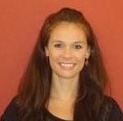Animating the Courtroom: CEO Helps Top Law Firms Win Trials with Persuasive Graphics

November 2005
Ken Lopez may have a Tom Cruise haircut and boyish grin, but make no mistake, this 36-year-old CEO runs a serious business with millions, sometimes billions, of dollars on the line. How he got from there (law school) to here (not practicing law) is an interesting learning curve for this entrepreneur.
We’ll get back to that later. First, Lopez’s company, Animators, is one of only a few consultancies doing what it does — which is to provide visuals to its clients, some of the top law firms in the U.S., for trials involving the law firms’ clients, Fortune 500 companies. Forget the Perry Mason image of a diagram propped up on an easel depicting the bedroom where the alleged murder took place. The visuals we’re talking about range from giant custom-made posters to multimedia and animation.
Says Lopez, “We take PowerPoint from the corporate level to a whole other space most people wouldn’t know exists.” Lopez sees Animators as “translators from the auditory to the visual. You have these cases involving billions of dollars and you have lawyers who are talking and you have jurors who want to see something so they can figure it out. We make a visual argument for the jury.”
To that end, the Alexandria-based Animators hires two kinds of people: visually minded lawyers and artists — about one-third lawyers and two-thirds artists. How does one find lawyers who are visually minded? More about that later. When Animators is hired, it sends salespeople and project managers to meet with attorneys, the kind that make about $1 million a year, and they get Animators up-to-speed on the case at hand, to the extent, says Lopez, that “we could then teach the case to anyone else. We come back and pore through legal documents … every week here is like final exams, staying up all night to figure it out so we can regurgitate it so anyone could understand. Pictures start to pop into our heads. We look like an ad agency — the classic view — everyone gathers. In the legal world we call it a focus group, but it’s really a brainstorming session and the project group presents the case and gets feedback. Someone might say, ‘That doesn’t make sense, what are you talking about?’” Lopez makes it clear that Animators keeps working until no one asks that question.
Speaking to the Animators approach, Paul Gutermann, a partner with Dupont Circle-located Akin Gump and an Animators client, says, “What I really liked about Animators is that they spent the time … we brought them in early in our thinking process. We used some of what they thought and some not, but it was impressive that they thought it through and put themselves in our position regarding what we were trying to accomplish.” He adds, “This is going to become more common. I think being able to do it effectively, as Animators does, is pretty important.”
A THOUSAND WORDS
“We’ve done studies,” says Lopez, “and there are others around; people are either visual or auditory. Most lawyers are auditory, and that’s how they learn best so that’s how they communicate best. The problem is, in the general population most people are visual, so then are most jurors.” Attorney Gutermann concurs, “Certain people learn more from listening, others learn more from visuals. When you use both [visuals and oral arguments], you reach both groups. The visuals let you go through some background more quickly, and help a jury or judge recall the testimony or points you’re trying to make more easily because they’re not just sitting there listening.”
Animators’ client base is mostly super sized firms with 500 or more attorneys handling cases with substantial potential fines or damages. Lopez talks about a case involving a coal-fire power plant. “There is a lot of litigation around those,” he says, “and we tend to represent a company that has been accused of something, the defendant, in this case the government versus the plant. The government says that if such plants make big changes, the plants have to install the latest environmental pollution control, but Congress has never defined ‘big.’ We, as Animators likes to say when we align ourselves with our clients, made changes and they were expensive, but if you look at this plant, it’s enormous. We knew the judge was a season ticket holder of the St. Louis Cardinals, so Busch Stadium would be a place he’d be familiar with. The government showed an illustration of semis loaded up with parts for the changes.” Lopez points to a FedEx truck outside the window. “That’s big, but next to a stadium it’s a small thing. We showed that the plant is not one Busch stadium, but 20 of them.” Lopez keys up the visual on his computer and, sure enough, one graphic of the stadium barely takes up space on the plant’s footprint and then on the screen the stadiums multiply to 20 until they cover the whole plant.
The point is made: The changes, put in perspective, weren’t that big in the context of the plant’s size and, therefore, the plant shouldn’t be expected to comply with additional government regulations. Other litigation might involve securities firms, pharmaceuticals, or tobacco companies. Notes Lopez, “A case might have to do with software or bioengineering patents, which can get very heavy. Experts get PhDs for this kind of thing, and yet a juror is called upon to get it very quickly. Explaining it is our business. We do roughly 75 cases a year and have a one-third market share of the top 30 cases, over $1 billion each.”
FROM THERE TO HERE
So, where and how does one find what Lopez refers to as “attorneys who are creative, trained artists and very intellectual artists”— his combination of employees? Well, he just does, commenting, “It’s an odd and interesting mix of people you wouldn’t find at any other company. They’re the groups who wouldn’t have hung out in high school.” Currently, he has a lead on a lawyer who draws comic books.
Lopez says it was more challenging to break into the company’s market. “Prestigious law firms are a country club marketplace. You’re brought in by invitation and even then with some skepticism. It took persistence, far longer than I thought it would.” Clad in jeans and a Polo-type shirt in the office, Lopez says he absolutely wears a suit to client meetings.
Lopez’s path began in law school, when he picked up animation and graphics as a hobby. He graduated but says, “I decided I didn’t want to be one of 12,000 new lawyers that come out every year, and this combination of knowledge and talents (law and graphics) was the one thing that made me unique. Then I saw engineering firms doing graphics and animation for trial lawyers and those firms were getting the work done, but I talked to some big lawyers around town and got the feeling that the engineers were good at illustrating but that the lawyers needed advocacy. In other words, don’t just show me how that (he points to the tape recorder) functions but show me in the most persuasive way why the other company’s product doesn’t work the same.
“I had interesting job offers, almost went to work on the Hill, but none of those were edgy enough. I had something else to offer; I just didn’t know what. I started into business not know-ing I was starting a business. I thought I’d crafted a really interesting way to have a job. I was able to cut a deal with a firm in Alexandria to do the work at a small salary, friends and family threw a bit of money my way … it took me six months to a year to figure out, Oh, this is a business. Oh, I’m an entrepreneur. I guess I’d better learn how to spell it,” Lopez laughs.
“Almost zero business in year one … fast-forwarding, bought that company out and brought in another investor and moved offices. For two and a half years, I didn’t hire an employee but subcontracted the work. I made far less money than I would have if I’d hired employees, but there was almost no risk and it didn’t require much capital. I ended up producing 80 percent of the revenue of the subcontractor and it became time to hire.”
Lopez offers his best business advice for entrepreneurs: Stay in business. “Someone told it to me and I thought, What does that mean? But like with all great pieces of wisdom, it sunk in and it meant that the first years are going to be tougher than you think, but what happens if you just stay in business is serendipity: Things just start to work out. That was the case for me. Sure, we worked hard and did the right things, but you still need the time element, especially in a service business like this. “I stayed in business during really difficult times. September 11 impacted us hard because when there’s uncertainty in the economy, 98 percent of large firms don’t gamble on litigation. They settle cases. We saw business drop off 40 percent. We learned from that to punch up financing and buy out previous investors because I still believed in the company. We also changed our sales approach from relationship selling, which we still do, to a very sophisticated sales organization with multiple tiers of sales, researchers, telephone people, and the classic hunters and deal closers. Out of that terrible lesson of 9/11, we rebuilt the company so that it’s fantastically more sophisticated with predictability in sales. So, if some shock to the economy were to happen again …,” Lopez trails off, implying that he and his company are well prepared.
When asked how he had the epiphany regarding sales, Lopez admits, “It was a classic case of I didn’t know what I didn’t know. The great thing about my business background is that I didn’t have any and I knew it. So, I immersed myself in places where I could get it. By far, the most important thing I did was to join TEC, an organization of CEOs, with groups meeting worldwide. About 16 or so of us meet monthly and go over issues. We share experiences … there’s an immense amount of business knowledge, and we all have the same issues no matter what size the company. They insisted after 9/11 that I get with a sales consultant. I thought, Sales was working and we were growing and it was a model I understood — hey, I know how to talk to people — but I did it.” Lopez says that’s when he learned his second best business advice. “My consultant taught me this: Sales is a certain number of calls + a certain number of meetings = a certain amount of business. So we did a basic analysis of how we were doing on that equation, and we weren’t making enough calls and that, in part, increased our risk throughout the organization. So, we hired a $50,000 consultant but added $1 million in business in a year, based on that silly little sales equation. I’m humbled by it and reminded of how little I know, and that I’m still capable of learning really obvious things.” Lopez laughs again.
FROM HERE TO THERE
Is using fancy visuals in trial cases a growing trend? Says Gutermann, “I wouldn’t say it’s a new trend, but in the past lawyers and firms tended to do visuals inhouse, so there was less creativity than what we’re seeing with people like Animators. The types of cases, particularly in big cities, that go to trial are either factually complex or deal with scientific issues, such as environmental cases, or they are intellectual property cases or cases of corporate crime dealing with accounting. The testimony can be dry, and you’re trying to communicate what might be complicated to a group of people who may not be familiar with the issues. You want to be able to explain the background without boring them or taking so much time that the judge says you’re taking too much time.”
Asked if visuals play any part pretrial in negotiating a settlement, Lopez answers, “Depends on the case. Often, our work is used strategically to send the message that our side is serious about winning. If a big company’s going to settle a case, you can see it coming because it’s not invested in fighting. When we’re brought in (often not until four months before trial in cases that have been going on for years), the likelihood of settlement is low. Work needs to be exchanged in advance, and they can see what we’ve created and know it’s coming at them and how much time has been invested. That sends a big strategic message. About half of the cases we work on settle even though we’ve done our part. The other half, we’re going to trial.”
Gutermann weighs in, “One challenge is to convince the client to pay the extra money for this type of consultant, investing the money to make sure you can present the best case you can. Convincing tends to be easier for bigger cases because there’s more at stake.” Has his firm done a cost-analysis? “We do mini mock trials. We pick a fake jury or for a bench trial you can hire former judges to listen to the presentation. We ask what was effective or not effective. In a sense, that’s a cost benefit analysis.”
Have Questions or Need Help?
Contact Persuadius 24/7 to run I would be happy to serve as your point of contact for questions about jury consulting, mock trials, litigation graphics, in-court trial support technicians, visual advocacy and other litigation consulting services: Michele Hargrove
Michele Hargrove
Director, Client Development
800.847.9330
hargrove@persuadius.com



